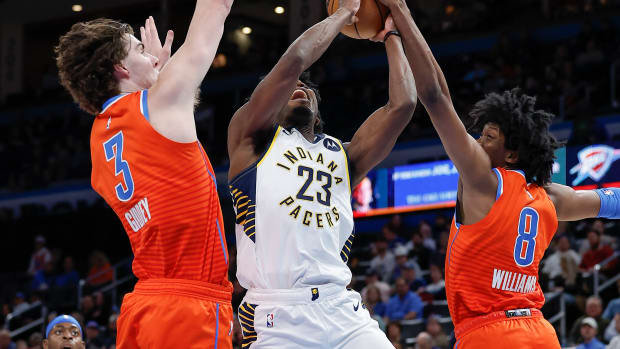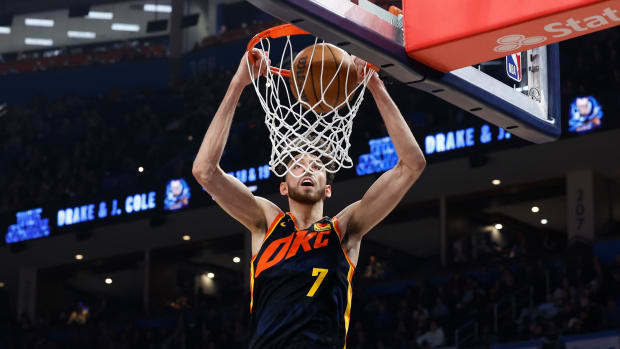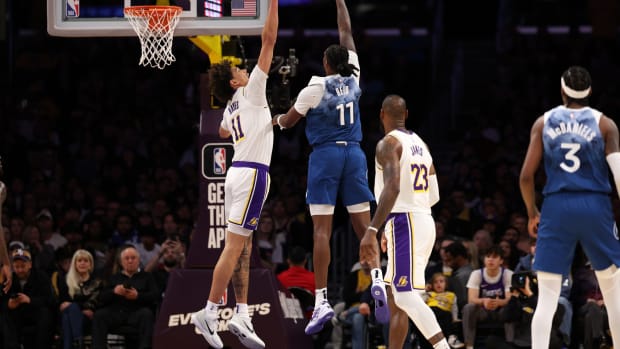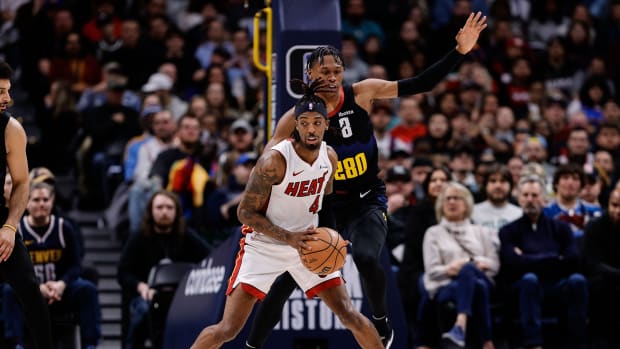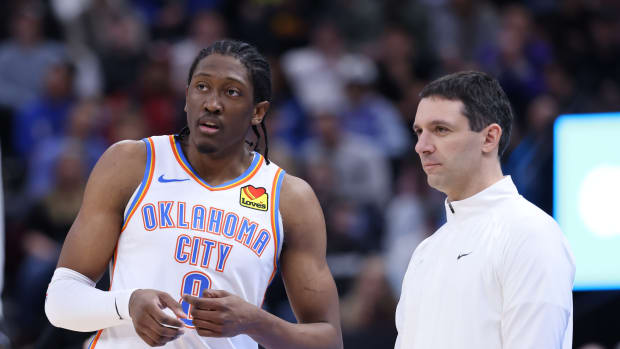NBA, NBPA reach tentative new collective bargaining agreement
The NBA and NBPA have finalized a new collective bargaining agreement ahead of Thursday’s opt-out deadline, the league announced Wednesday night.
The news was first reported by Marc Spears of ESPN’s The Undefeated. The sides have extended the mutual opt-out deadline to Jan. 13, to allow time to review the agreement and ratify the deal.
With an agreement in place, the new terms are pending ratification by players and owners. Both the league and Players Association had until Thursday at 11:59 p.m. ET for either side to opt out of the active CBA, triggering a potential lockout in summer 2017. The new deal runs through the 2023–24 season, with a mutual opt-out available in 2022.
Sources have informed SI.com of a number of key details of the new agreement. The players will maintain a 51% majority share of basketball-related income, with the players’ association more interested in growing the revenue than arguing for more points in the split. The definition of Basketball-Related Income (BRI) has expanded to included more revenue streams and benefit both parties. NBA franchise values have risen more than 240% since the 2011 lockout. Players are set to make $1.5 billion more in the first year of this deal than in 2011, when players had 57% of less total revenue, given how the overall pot has grown for both sides.
Salaries will increase dramatically. There will be a 45% increase in minimum salaries across the board for year one of the deal, with the average salary expected at $8.5 million in 2017-18 and projected at $10 million by 2020–21. Free agency terms are set to become more favorable for players, with fewer restrictions on first-round picks, fewer moratoriums and rule changes involving qualifying offers. Luxury tax rules will be “softened” for some teams and trade rules will be “liberalized.”
Rosters are set to expand by one and potentially two spots next season to accommodate “two-way” contract players that will move between the NBA and D-League and remain under control of their franchises. This creates between 30 and 60 new jobs for players and encourages young talent to develop domestically rather than turn pro overseas.
The schedule will be extended by seven days, starting the season earlier and further reducing back-to-back games and stretches of four games in five days. This aims to reduce stress and injury risk. A mental health program will be established to provide support to players. Additionally, a new retiree health program will begin effective Jan. 1, 2017, co-funded by the PA and league, and covering every player with three or more years of NBA service time accrued. Pensions will also increase.
A “comprehensive” program has been established to deal with domestic violence, sexual assault and child abuse, offering resources for players and their families and including a defined process for investigations and the procedures that follow. The program will offer education, support, treatment and counseling and a confidential hotline for players and their families.
NBA First-Quarter Awards: An MVP Race For The Ages And More
The Group Licensing Agreement, involving players’ marketing rights, is a separate deal between the league and Players Association, and reports last week indicated it had led to a snag in negotiations. The GLA, tied to the CBA and one of the final sticking points in talks, has been agreed upon.
The Vertical’s Adrian Wojnarowski reports the “one and done” draft rule will stay in place for now, requiring players to play one year of college basketball or spend that time playing professionally elsewhere in the world before becoming eligible for NBA selection. He adds that neither side is committing to keeping that rule in place as-is for the duration of the new CBA.
ESPN’s Marc Stein reportsteams will be able to extend players’ contracts up to five or six seasons, as opposed to the current four, by establishing a “designated veteran” for a lucrative, longer-term extension.
The current CBA would not expire until June 30, 2017, if either side should opt out at the last minute (which would trigger a lockout on July 1). The NBA last faced a lockout in 2011, which lasted 161 days and shortened the regular season to 66 games from 82.
- Jeremy Woo






























